Hauptinhalt
Topinformationen
Ruth Balint: Destination Elsewhere: Displaced Persons and Their Quest to Leave Postwar Europe, Cornell University Press 2021.
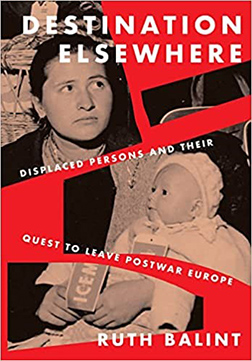
In this unique "history from below," Destination Elsewhere chronicles encounters between displaced persons in Europe and the Allied agencies who were tasked with caring for them after the Second World War. The struggle to define who was a displaced person and who was not was a subject of intense debate and deliberation among humanitarians, international law experts, immigration planners, and governments. What has not adequately been recognized is that displaced persons also actively participated in this emerging refugee conversation. Displaced persons endured war, displacement, and resettlement, but these experiences were not defined by passivity and speechlessness. Instead, they spoke back, creating a dialogue that in turn helped shape the modern idea of the refugee.
Sheila Fitzpatrick: "White Russians, Red Peril": A Cold War History of Migration to Australia, Routledge 2021.
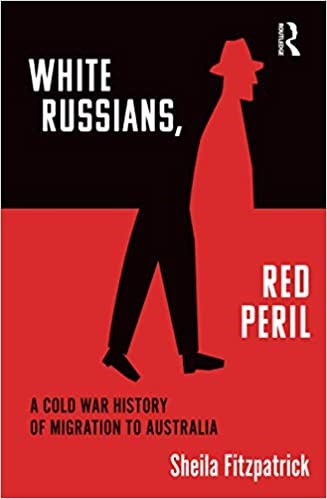
A Cold War History of Migration to Australia, Routledge 2021. Over 20,000 ethnic Russians migrated to Australia after World War II yet we know very little about their experiences. Some came via China, others from refugee camps in Europe. Many preferred to keep a low profile in Australia, and some attempted to pass as Polish, West Ukrainian or Yugoslavian. They had good reason to do so: to the Soviet Union, Australia’s resettling of Russians amounted to the theft of its citizens, and undercover agents were deployed to persuade them to repatriate. Australia regarded the newcomers with wary suspicion, even as it sought to build its population by opening its door to more immigrants. Making extensive use of newly discovered Russian-language archives and drawing on a lifetime’s study of Soviet history and politics, award-winning author Sheila Fitzpatrick examines the early years of a diverse and disunited Russian-Australian community and how Australian and Soviet intelligence agencies attempted to track and influence them. While anti-Communist White Russians dreamed a war of liberation would overthrow the Soviet regime, a dissident minority admired its achievements and thought of returning home.
Ildikó Barna (2020): Hungarian Jewish Holocaust Survivors Registered in Displaced Persons Camps in Apulia: An Analysis Based on the Holdings of the Arolsen (International Tracing Service) Digital Archives. In: Bardgett, Suzanne/Schmidt, Christine/Stone, Dan (eds.): Beyond Camps and Forced Labour. Proceedings of the Sixth International Conference, Cham: Palgrave Macmillan, pp. 165-184.
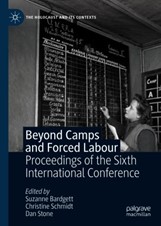
René Bienert (2020): Help for Survivors - Help from Survivors. Simon Wiesenthal and the Early Search for Nazi Criminals in Linz, in: Henning Borggräfe / Christian Höschler / Isabel Panek (Hg.): Tracing and Documenting Nazi Victims: Past and Present, Berlin 2020.
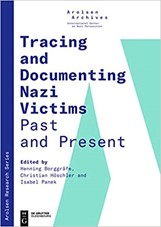
Andreas Bouroutis (2020): Ολοκαύτωμα στη Θεσσαλονίκη. Η ιταλική στάση και οι εβραίοι μαθητές του Ουμπέρτο Πρίμο. Holocaust in Thessaloniki. The Italian role and the Jewish students of Umberto Primo school, Εκδόσεις Αλεξάνδρεια.
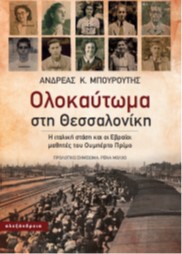
Προπολεμικά, η ιταλική παρουσία στη Θεσσαλονίκη ήταν διαρκής χάρη στην επαφή των Ιταλών με αρκετούς Εβραίους που είχαν διατηρήσει την ιταλική υπηκοότητα. Η μακρόχρονη αυτή σχέση κλονίστηκε το 1938 με την εφαρμογή στην Ιταλία των φυλετικών-ρατσιστικών νόμων που εξοβέλιζαν τους Εβραίους από τη δημόσια ζωή.
Το πρώτο μέρος του βιβλίο εξετάζει τη σχέση των Ιταλών με ένα μέρος της εβραϊκής κοινότητας μέχρι το ξέσπασμα του πολέμου. Το χρονικό του διωγμού των Εβραίων από τους ναζί και του εκτοπισμού τους στο Άουσβιτς από τον Μάρτιο του 1943 παρουσιάζεται με αναφορές κυρίως από τα ιταλικά αρχεία, ενώ διαλύονται οι αμφίσημες ενέργειες των Ιταλών διπλωματών για τη διάσωση ορισμένων από αυτούς.
Julia Devlin (2014): Deportation und Exil: Eine polnische Odyssee im Zweiten Weltkrieg, Berlin: Vergangenheitsverlag.
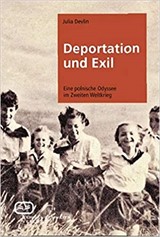
Dies ist die unglaubliche Geschichte von tausenden Polen, die während des Zweiten Weltkrieges in die Sowjetunion deportiert wurden und auf abenteuerliche Weise nach Indien und Afrika gelangten. Ostpolen, Februar 1940. In den frühen Morgenstunden werden tausende Familien von sowjetischen Soldaten aus dem Schlaf gerissen, mit ihren Habseligkeiten zum Bahnhof gebracht und in Viehwaggons nach Sibirien transportiert. Hier müssen sie unter unmenschlichen Bedingungen in Bergwerken und Kolchosen arbeiten. Doch aus Verfolgten werden unvermutet Alliierte: Nach der deutschen Invasion 1941 dürfen die Deportierten eine eigene Armee bilden, um gegen das Deutsche Reich zu kämpfen. Sie werden aus den Lagern entlassen, schlagen sich in den Süden der Sowjetunion durch und werden über das Kaspische Meer in den Iran evakuiert. Von dort geht es weiter: für die wehrtauglichen Männer auf die Schlachtfelder des Weltkrieges, für die Zivilisten nach Indien, Neuseeland und Afrika, wo auch immer eine Bleibe für sie gefunden werden kann. Und so entstehen in Savanne und Urwald, am indischen Ozean und "down under" DP-Lager, in denen 36000 Menschen darauf warten, dass der Krieg zu Ende geht. Währenddessen versuchen sie, ein möglich normales Leben zu führen.
Sebastian Bondzio, Linda Ennen-Lange, Lukas Hennies, Sebastian Huhn, Max Pochadt, Christoph Rass und Janine Wasmuth (2021): Die Osnabrücker Ausländermeldekartei 1930–1980. Potenziale als Quelle der Stadt- und Migrationsgeschichte, in Osnabrücker Mitteilungen 126, S. 137-193.
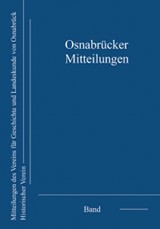
Lukas Hennies, Sebastian Huhn und Christoph Rass (2018): Gewaltinduzierte Mobilität und ihre Folgen „Displaced Persons“ in Osnabrück und die Flüchtlingskrise nach dem Zweiten Weltkrieg, in: Osnabrücker Mitteilungen 123, S. 183-231.
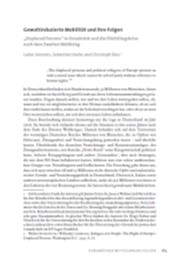
Christian Höschler/ Isabel Panek (2019) (Hrsg.): Zweierlei Suche. Fundstücke zu Displaced Persons in Arolsen nach 1945, Bad Arolsen: Arolsen Archive.
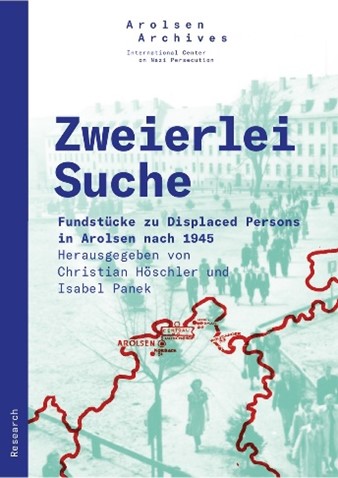
Sebastian Huhn (2021): Negotiating Forced Migration in the IRO’s ‘Care and Maintenance’ (CM/1) Files. One Setting, Three Underlying Aims, (at Least) Four Actors, and Multiple Forms of Human Agency, IMIS Working Paper 12, Osnabrück: IMIS.
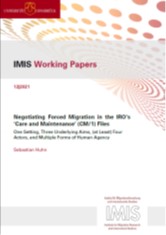
To investigate appeals for assistance and resettlement, the IRO designed a questionnaire, the CM/1 form. These questionnaires have been available for research in the holdings of the Arolsen Archives since 2007.
This study explores to what extent and under what conditions the negotiation of forced migration can be analytically detailed in these CM/1 forms and related documents. This study argues that the CM/1 files are a unique historical source for exploring the negotiation of forced migration after the Second World War and the agency of the actors involved. It must be kept in mind however, that the IRO project was based on at least three overlapping aims, several actors were involved in the negotiations of the resettlement and the setting of the negotiations was based on peculiarities that have to be approached on a theoretical basis.
Jana Kasíková (2017): Ať mohou přijeti: organizace poválečné repatriace a návratů 1942-1947, Praha.
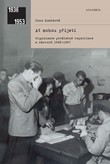
Miliony lidí musely během druhé světové války opustit svůj domov. Odešli před nebezpečím nebo byli vysídleni, přesunuti na nucené práce či do koncentračních táborů. Jak se tito lidé po válce vraceli do svých domovů? Kapitola ne nevýznamná, uvědomíme-li si, že pohyb lidí probíhal všemi směry, navíc na válkou zničeném kontinentě. Hrozilo nebezpečí šíření nemocí, nedostatečného zásobování i kriminálních přečinů. Toho si byli vědomi i vládní činitelé, a to dokonce již během války. Už od roku 1942 probíhala rozsáhlá mezinárodní jednání a vznikaly nové dohody. To vše mělo pomoci tzv. repatriaci, tedy návratu do vlasti těchto přemístěných lidí. Skutečnost však byla mnohem náročnější než plány a návrat se prodloužil na několik měsíců i let. Kniha mapuje organizaci těchto návratů v Československu od plánů vlády v exilu přes činnost repatriačního odboru po neúnavnou pomoc tisíců lidí. Dobrovolníci i nejrůznější organizace provozovali vývařovny a ošetřovali navrátilce. Text doprovází jedinečná obrazová příloha originálních fotografií, díky nimž je možné vidět, že nešlo o přesun masy, ale konkrétních tváří. Konkrétních lidí, kterým válka změnila nenadále osud a kteří se chtěli vrátit domů.
Angelika Laumer (2021): Logiken alltäglichen Erinnerns und Vergessens von NS-Zwangsarbeit in der ländlichen Gesellschaft. Eine wissenssoziologisch-empirische Studie, Gießen: Justus-Liebig-Universität, Dissertation.
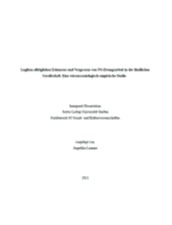
Ziel dieser Studie ist es, zu untersuchen nach welchen Logiken in der ländlichen Gesellschaft auf alltägliche Weise NS-Zwangsarbeit erinnert und vergessen wird. Unter „Logiken“ werden zwei Aspekte subsumiert: soziale Praxis und verbalisierte Deutungsmuster. Damit soll an einem empirischen Beispiel folgendes Paradox erklärt werden: Objektivierte Erinnerungen an NS-Zwangsarbeit sind in dieser regional-ländlichen Gesellschaft, wo Nachkommen von NS-Zwangsarbeiter_innen leben, gleichzeitig an- und abwesend. Dieses Phänomen zeigt sich, obwohl sich in Deutschland eine geformte Erinnerungskultur zu NS-Zwangsarbeit entwickelt hat. Im Untersuchungsgebiet, bestehend aus drei ländlichen ostbayerischen Landkreisen, hatten etwa 2.400 NS-Zwangsarbeiter_innen, meist in landwirtschaftlichen Familienbetrieben und mit vielerlei Kontakten zu den Einheimischen, gearbeitet. Manche von ihnen blieben nach dem Zweiten Weltkrieg mitunter in der Nachbarschaft ihrer früheren Einsatzorte, und gründeten Familien.
Jochen Lingelbach: On the Edges of Whiteness: Polish Refugees in British Colonial Africa During and After the Second World War, Berghahn Books 2020.
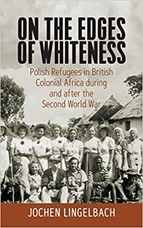
From 1942 to 1950, nearly twenty thousand Poles found refuge from the horrors of war-torn Europe in camps within Britains African colonies, including Uganda, Tanganyika, Kenya and Northern and Southern Rhodesia. On the Edges of Whiteness tells their improbable story, tracing the manifold, complex relationships that developed among refugees, their British administrators, and their African neighbors. While intervening in key historical debates across academic disciplines, this book also gives an accessible and memorable account of survival and dramatic cultural dislocation against the backdrop of global conflict.
Kerstin von Lingen (2018): Crimes against Humanity': Eine Ideengeschichte der Zivilisierung von Kriegsgewalt 1864–1945, Paderborn: Brill/ Schöningh.
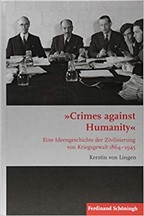
Das Leibniz-Institut Hessische Stiftung Friedens- und Konfliktforschung (HSFK) hat Kerstin von Lingen den Czempiel-Preis für die beste postdoktorale Monografie aus der Friedensforschung verliehen. Weitere Informationen finden Sie in der Pressemitteilung des HSFK. Transnationale Debatten unter Juristen haben das humanitäre Völkerrecht entscheidend geformt. Die Zivilisierung von Kriegsgewalt stand seit der Mitte des 19. Jahrhunderts im Zentrum und gipfelte im Konzept von „Crimes against Humanity“, das im Internationalen Militärtribunal von Nürnberg erstmals zum Tatbestand erhoben wurde. Kerstin von Lingen zeichnet diesen Weg nach – von den frühen völkerrechtlichen Debatten unter Juristen über die Haager Friedenskonferenzen und die Verhandlungen von Versailles nach dem Ende des Ersten Weltkriegs. Angesichts immer höherer Opferzahlen und ansteigender Massengewalt gegen Zivilisten wirkte der Zweite Weltkrieg wie ein Katalysator: Das Konzept „Crimes against Humanity“ wurde in London in Gremien geschärft, deren Akten für dieses Buch erstmals ausgewertet wurden. „Crimes against Humanity“ wurde nach 1945 neben dem Genozid-Vorwurf zum wichtigsten juristischen Werkzeug unserer Zeit, um Massengewalt gegen Zivilisten zu ahnden.
Markus Nesselrodt (2021): Dem Holocaust entkommen: Polnische Juden in der Sowjetunion, 1939–1946, De Gruyter Oldenbourg.
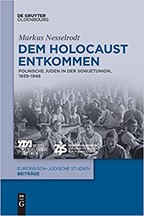
Über 230.000 polnische Juden überlebten den Zweiten Weltkrieg im Inneren der Sowjetunion. Viele waren der nationalsozialistischen Verfolgung durch rechtzeitige Flucht auf sowjetisches Territorium entkommen. Andere wurden gegen ihren Willen von der sowjetischen Geheimpolizei in das Landesinnere der UdSSR verschleppt, wo sie in abgelegenen Siedlungen unter schwierigen Lebensbedingungen Zwangsarbeit verrichteten. Die Mehrheit der polnischen Juden hatte sich allerdings im Rahmen der Evakuierung sowjetischer Staatsbürger 1941–1942 aus den Frontgebieten in den Süden der UdSSR durchgeschlagen. Dort hielten sich die meisten polnisch-jüdischen Exilanten bis zur Rückkehr nach Polen im Jahre 1946 auf.
Die Studie untersucht Erfahrungen polnischer Juden im Zeitraum von 1939 bis 1946. Der Fokus liegt dabei auf den Jahren in den zentralasiatischen Sowjetrepubliken, wo hunderttausende polnische Juden täglich um ihr Überleben als Fremde in einem von Krieg, Armut und politischem Terror gezeichneten Land kämpfen mussten. Ihre Geschichte an der »Peripherie des Holocaust« (Yehuda Bauer) erweitert den Horizont jüdischer Erfahrungen im Zweiten Weltkrieg um die Erlebnisse im sowjetischen Exil.
Ebony Nilsson (2019): ‘On the Left: The Russian Social Club in Early Cold War Sydney,’ in: Australian Historical Studies 50, 1, pp. 63-80.
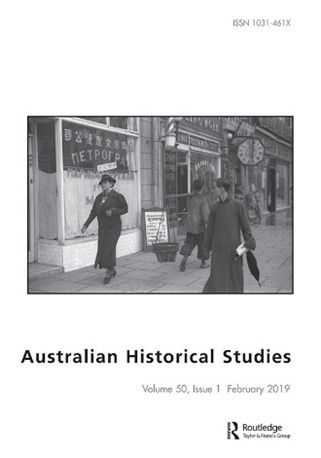
Whilst most Russian-speaking displaced persons (DPs) settled in Australia were anti-Communist, a small number were actively left-wing. This article examines the revitalisation of Sydney’s left-wing Russian Social Club sparked by the arrival of DPs from both Europe and China. Using recently released intelligence records, it highlights the voices and activities of left-wing DPs and suggests that the impacts of state surveillance and the Petrov Affair have contributed to these politically-active DPs occupying a gap in the historical record. Further, it points to the demands the state made of migrants’ political lives during the early Cold War.
Peter Gatrell/ Anindita Ghoshal/ Katarzyna Nowaka/ Alex Dowdall (2021): Reckoning with refugeedom: refugee voices in modern history, in: Social History, Vol. 46/ 1, pp. 70-95.
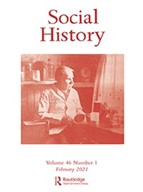
This article outlines an agenda to relocate refugees to the centre of historical enquiry by recovering and analysing their voices, in the form of letters and petitions sent to authorities within the refugee regime. We adopt a comparative approach by using evidence from four distinct incarnations of the refugee regime: the League of Nations in interwar Europe; the early post-1945 era represented by the International Refugee Organization (IRO); the era of the newly established Office of the United Nations High Commissioner for Refugees (UNHCR); and the quarter century following Partition in India, specifically its impact in West Bengal. The article demonstrates how refugees’ voices were shaped by the social, cultural and administrative contexts within which they wrote, and that understanding these contexts can help us see why refugees framed their claims in particular ways. The article suggests that Mikhail Bakhtin’s concept of ‘polyphony’ provides a means of understanding how refugees understood their predicament and engaged with the refugee regime from often contradictory and ambiguous viewpoints.
Christoph Rass/ Ismee Tames (2020) (eds.): Violence Induced Mobility. Special Issue, Historical Social Research, Vol. 45/ 4.
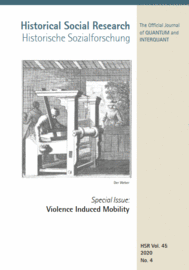
Special Issue – Negotiating the Aftermath of Violence Induced Mobility in the Wake of the Second World War. Rethinking Sources, Methods and Approaches from the Intersection of War and Migration Studies in the Digital Age. With contributions by Henning Borggräfe, Filip Strubbe, Frank Wolff, Peter Romijn, Regina Grüter & Anne van Mourik, Jannis Panagiotidis, Sebastian Huhn, Christian Höschler, Edwin Klijn, Olaf Berg & Peter Gatrell.
Serafima Velkovich (2020): Polski paszport jako droga do wolności. Żydowscy uchodźcy z ZSRR po II wojnie światowej, in: Lidia Zessin-Jurek, Katharina Friedla (eds.): "Syberiada Zydow polskich. Losy uchodzcow", Warszawa: Żydowski Instytut Historyczny.
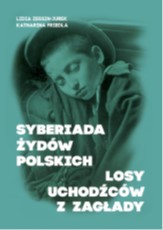
Nathaniel Parker Weston (2021): Memoirs in Miniature: CM/1 Forms and Fragmentary Understandings of the Holocaust, in: Humanities, Vol. 10/ 1.
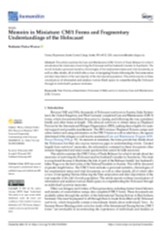
This article examines the Care and Maintenance (CM/1) form of Paula Bettauer for what it reveals about her memories of surviving the Holocaust and her husband’s murder in Auschwitz. The record includes a personal narrative, chronologies of her employment status and vital documents, as well as other details, all of which offer a view of navigating Vienna following the Nazi annexation and later deportation of the vast majority of the city’s Jewish population. This article reports on these crucial pieces of information and analyzes various blank spaces in comprehending the Holocaust through an individual’s postwar memories.
Ramon Wiederkehr (2020): « Zwischen humanitärer Solidarität und Transitprinzip. Die Umsiedlung von Flüchtlingen in der Schweiz durch die International Refugee Organization, 1947–1952, in: SZG/RSH/RSS 70/2, pp. 219–236.
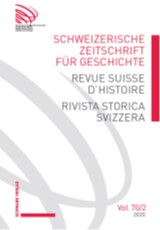
The resettlement of «Displaced Persons» after the Second World War by the International Refugee Organization (IRO) has popularly been presented as a success story by the authorities. Switzerland joined the organisation in 1949 and consequently resettled several thousand refugees as part of international resettlement programs. The article aims to shed light on this largely unexplored episode in Swiss history. It seeks to understand Switzerland’s humanitarian involvement not only on a structural but also on an individual level by complementing the federal sources with several refugee case histories. The stories are able to better convey the precarious refuge experience in transit. Refugees were caught between the pressure exerted by Swiss authorities to leave the country and the conflicting fact that not everyone was eligible for resettlement under the Mandate of the IRO. This meant that refugee families especially were faced with the difficult decision of whether or not to leave family members behind; a situation that was further complicated by the impending liquidation of the IRO, which put the refugees under considerable time pressure. The case histories therefore not only complicate the image of Switzerland’s «humanitarian tradition» but also reveal the ambivalences of humanitarian aid on an individual level.
Stephanie Zloch, Lars Müller, Simone Lässig (2018) (eds.): Wissen in Bewegung: Migration und globale Verflechtungen in der Zeitgeschichte seit 1945, Berlin/ Boston: De Gruyter Oldenbourg.
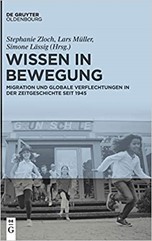
Wissen zirkuliert über Grenzen hinweg und verändert sich dadurch ebenso wie die Gesellschaften, die es hervorbringen. Mit seinen empirischen Beiträgen aus den Bereichen Bildung, Medien und Wissenschaft zeigt der Band, wie und welches Wissen – auch über räumlich entfernte Regionen – entstand, welche Akteurinnen und Akteure aktiv waren und wie bestehendes Wissen in Frage gestellt wurde.

